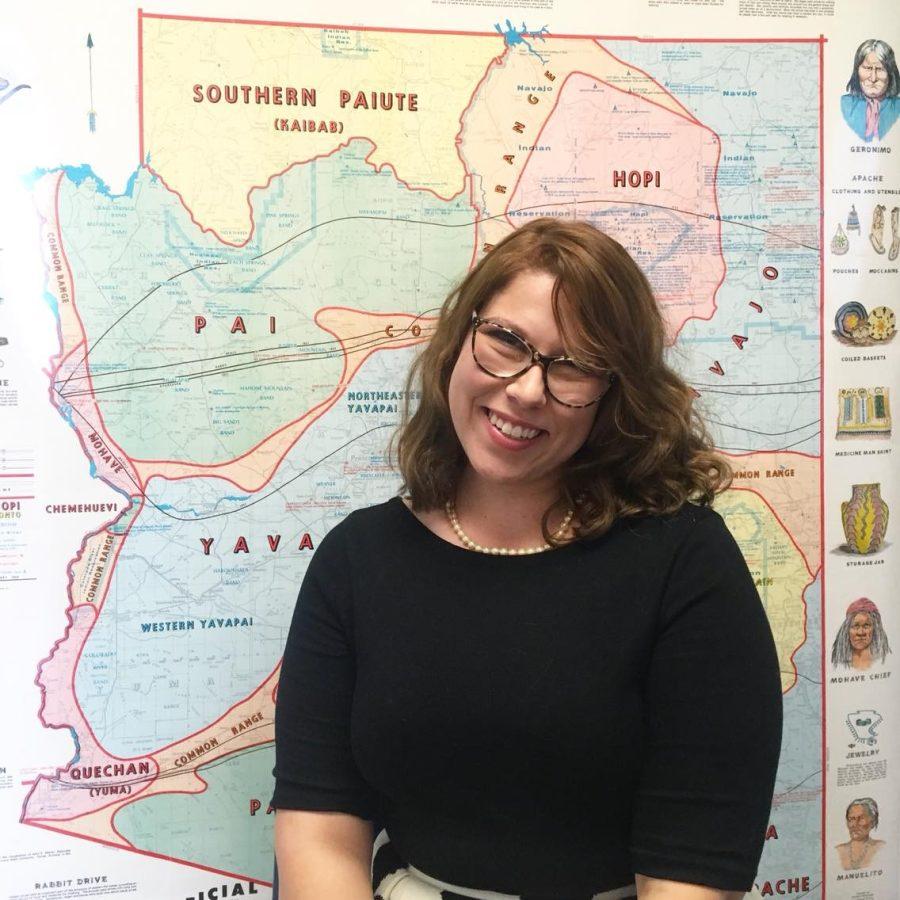Though most people aren’t aware of it, women have played a role in the construction and maintenance of the Southern Pacific Railroad since it first reached Tucson, according to the Arizona History Museum Education Curator Jaynie Adams.
According to UANews, Adams and former locomotive engineer Julianne Hurst-Williams will give a talk at the Arizona History Museum on the history of women’s role in the railroad on March 10 at 5:30 p.m. in light of women’s history month and 140th anniversary of the Southern Pacific Railroad’s arrival in Tucson and will explore women’s hidden contributions to the railroad in the past and today.
“The traditional way of looking at historical documentation silences the history of women,” Adams said. “Because they’re not the highest ranking member[s] of the internal structure, their stories go unheard.”
Adams explained that in the late 1800s, women were not on payroll for their work on the rails. This meant that women were only recorded working as secretaries and other assistant-like positions, which Adams said is far from the whole story.
“I don’t think any of the women who fed the rail workers or opened boarding houses or provided first aid to railroad laborers … would have considered themselves railroad workers,” Adams said. “They were just doing the right thing to do — or the womanly thing to do.”
The way Adams described her research was this: The job of tending to injuries and providing food and lodging was necessary in order to sustain such a large project like the Southern Pacific Railroad, but historical accounts don’t credit anyone with the task.
Adams said that in order to see what was going on behind the scenes, one has to ask further questions about the little information that is available.
As an example, Adams asked, “If you see a picture of railroad workers having lunch, where did they get that lunch?”
RELATED: Two architects, two journeys, one connection: Judith Chafee
Support was not the only role women played in the railroad’s development. In order to build the railroad, Adams explained that the company first had to buy the land it would cover. In Tucson, there were female landowners who participated in these transactions. Unfortunately, women’s land was often under valued in comparison to men’s.
The land and worker support that women gave the railroad began to evolve during World War II due to a shortage of male workers, according to Adams. Women began to take on more substantial jobs as laborers and, in the last 60 years, women have been taking on skill-based positions like conductors and engineers.
As one such engineer, Hurst-Williams began working for the railroad in 1977 after her brother told her about a shortage of engineers. She plans on telling stories about her experiences on the railroad.
Hurst-Williams admitted that it was a tough job, not just because of the ever changing schedule but also due to the conditions. She said that the engines produced an incredible amount of heat, making work dirty, sweaty and dangerous.
Despite all of that, she continued the work as long as she could.
“I just really loved the job,” Hurst-Williams said. “It was picturesque and beautiful and exciting.”
However, as the fourth woman to work in engine service in Arizona, Hurst-Williams reported many challenges. Most people were very kind, she said, but some were quite sexist and she had a few negative experiences.
RELATED: Banned Band: The story of local ’80s punk band ‘UPS’
Hurst-Williams experienced the systems set in place in a very male-oriented work environment, and she mentioned that the lack of support put her in danger at times.
In one example, Hurst-Williams recounted that one of her duties was to check out the locomotives and to make sure all the engines were running correctly. She occasionally ran into travelers on those rounds.
“It might be three in the morning. That other person on the front of the engine can’t see you … anything could happen,” Hurst-Williams said. “Sometimes [the travelers] would be drunk and scary, and it would be a really frightening experience.”
Hurst-Williams also mentioned that there were issues with bathrooms. Inside the locomotives, she explained that the bathroom was near the engine and dangerous to get to. She felt that showering got uncomfortable when workers were stationed in one place, as there was only ever one bathroom.
“I didn’t make a big deal about anything,” Hurst-Williams said. “I didn’t want to stand out.”
During the talk, Hurst-Williams intends to tell more stories, and she and Adams will unveil some of the railroad’s feminine history. Events like this help expand our knowledge of that history and much more, but according to Adams, there is still a long way to go.
“Historians still tend to be very male and very white, … and very cis-gendered,” Adams said.
Adams said that as more people of color and diverse gender identities begin their own work, we will start to see more inclusive and accurate accounts of history.
As Adams decreed, “Intersectionality is not a destination; it’s a process.”
Follow Capri Fain on Twitter















